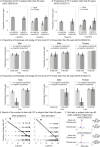Chronic pain in the Chilean population: risk factors prevalence and cognitive associations
- PMID: 40765726
- PMCID: PMC12321896
- DOI: 10.3389/fragi.2025.1548667
Chronic pain in the Chilean population: risk factors prevalence and cognitive associations
Abstract
Chronic pain (CP) is a global public health issue and a critical factor in the aging process. Chile, as one of the most aged countries in Latin America, presents a unique context for exploring CP and its associated factors. Despite its significance in aging, previous studies in the region often fail to comprehensively address key variables such as age, income, mood, mobility, diet, and cognitive skills, nor do they systematically investigate the relationship between CP and cognitive impairment. This study presents a comprehensive analysis of CP prevalence, related sociodemographic and health variables, and its link to cognitive impairment, using representative data of the Chilean population 15 years and older from the 2009-2010 and 2016-2017 Chilean National Health Surveys (CNHS). In the expanded sample of 12,791,542 and 13,399,937 individuals respectively, the overall prevalence of CP was 46.0% in the 2009-2010 CNHS and 28.9% in the 2016-2017 CNHS, with prevalence increasing with age. CP ranged from 26.6% among individuals aged 15-24 years to 59.9% among those aged 65-80 years in the 2009-2010 CNHS, and from 16.6% to 40.2% in the 2016-2017 CNHS. Female participants consistently reported higher CP rates, with significantly higher prevalence than males across age groups 15-64 years. Using complex survey logistic regression analyses, we identified several factors that were significantly associated with CP, including reduced mobility, depression, anxiety, socioeconomic disadvantage, and lower educational attainment. Machine learning techniques were employed to classify CP and non-CP cases, providing a nuanced understanding of the complex interplay between factors that influence CP. In a secondary analysis among those 60 years and older, no significant difference in CP prevalence was observed between individuals with and without cognitive impairment measured with an abbreviated MiniMental State Examination test. However, those with cognitive impairment tended to report pain in a greater number of anatomical sites. This study provides the first nationally representative evidence of CP in Chile in relation to age, income, mood, mobility, diet, and cognitive performance. These findings contribute to the understanding of CP as a public health issue in Latin America. The study underscores the need for targeted interventions to promote healthy longevity and reduce the burden of chronic diseases in aging populations.
Keywords: Chile; chronic pain associated factors; cognitive impairment; elderly population; prevalence.
Copyright © 2025 Hernández, Ochoa-Rosales, Ibáñez, Oyanadel, Olavarria, Marín-Díaz, Caviedes, Hazelton, Ramos, Santamaria-García, Custodio, Montesinos, Bruno, Avila-Funes, Matallana, Cruz, Petermann-Rocha, Slachevsky, Duran-Aniotz and Gonzalez-Silva.
Conflict of interest statement
The authors declare that the research was conducted in the absence of any commercial or financial relationships that could be construed as a potential conflict of interest. The author(s) declared that they were an editorial board member of Frontiers, at the time of submission. This had no impact on the peer review process and the final decision.
Figures



Similar articles
-
Investigation and analysis of mental health status of the older adult in western rural areas.Front Public Health. 2025 Jul 16;13:1612600. doi: 10.3389/fpubh.2025.1612600. eCollection 2025. Front Public Health. 2025. PMID: 40740371 Free PMC article.
-
Comparison of Two Modern Survival Prediction Tools, SORG-MLA and METSSS, in Patients With Symptomatic Long-bone Metastases Who Underwent Local Treatment With Surgery Followed by Radiotherapy and With Radiotherapy Alone.Clin Orthop Relat Res. 2024 Dec 1;482(12):2193-2208. doi: 10.1097/CORR.0000000000003185. Epub 2024 Jul 23. Clin Orthop Relat Res. 2024. PMID: 39051924
-
The association between hearing loss and depression in the China health and retirement longitudinal study.Sci Rep. 2025 Jul 1;15(1):20537. doi: 10.1038/s41598-025-05749-9. Sci Rep. 2025. PMID: 40595946 Free PMC article.
-
Falls prevention interventions for community-dwelling older adults: systematic review and meta-analysis of benefits, harms, and patient values and preferences.Syst Rev. 2024 Nov 26;13(1):289. doi: 10.1186/s13643-024-02681-3. Syst Rev. 2024. PMID: 39593159 Free PMC article.
-
Pharmacological interventions for pain in children and adolescents with life-limiting conditions.Cochrane Database Syst Rev. 2015 Mar 13;2015(3):CD010750. doi: 10.1002/14651858.CD010750.pub2. Cochrane Database Syst Rev. 2015. PMID: 25768935 Free PMC article.
References
-
- Aguilar-Latorre A., Asensio-Martínez Á., Oliván-Blázquez B., Álvarez-Bueno C., Cavero-Redondo I., Lionis C., et al. (2023). Association between sense of coherence and depression in patients with chronic pain: a systematic review and meta-analysis. PLos One 18 (1), e0279959. 10.1371/journal.pone.0279959 - DOI - PMC - PubMed
-
- Aranda M. P., Marquez D. X., Gallagher-Thompson D., Pérez A., Rojas J. C., Hill C. V., et al. (2023). A call to address structural barriers to Hispanic/Latino representation in clinical trials on Alzheimer’s disease and related dementias: a micro-meso-macro perspective. Alzheimer’s and Dementia Transl. Res. and Clin. Interventions 9 (2), e12389. 10.1002/trc2.12389 - DOI - PMC - PubMed
LinkOut - more resources
Full Text Sources
Miscellaneous

